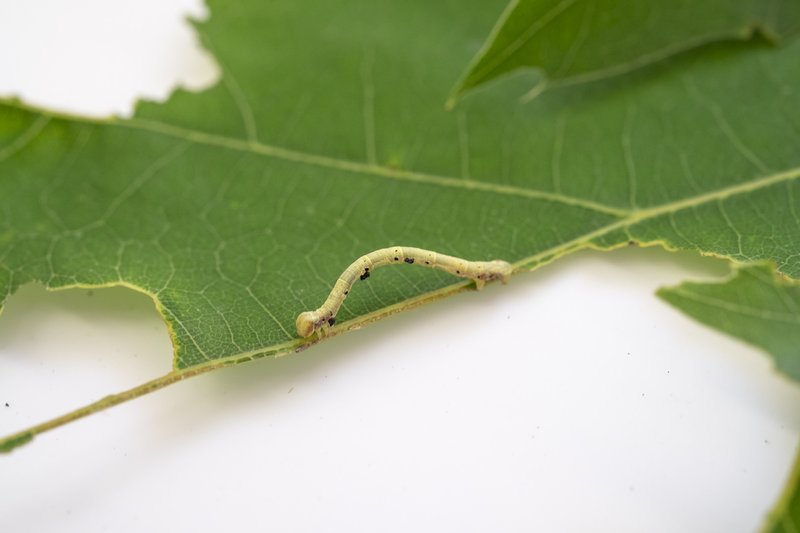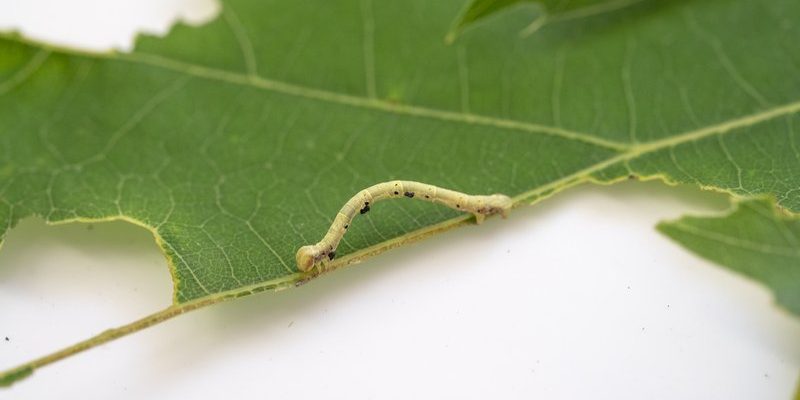
The connection between inchworms and leaf fall isn’t just a curious fact; it’s a fascinating glimpse into the cycle of life in nature. Inchworms, also known as measuring worms due to their unique crawling style, are actually the larvae of geometer moths. As you sip your coffee, let’s explore how these little guys impact the life cycle of trees and the significance of leaf fall in their habitat.
What Are Inchworms?
Inchworms are fascinating little creatures that have a unique way of moving. Unlike most caterpillars that crawl with a distinct rhythm, inchworms inch their way along by contracting their bodies and extending them—a bit like measuring their distance as they go. This method of locomotion gives them their name, and it helps them blend into their surroundings, making them less visible to predators.
These tiny larvae are typically green or brown, allowing them to camouflage perfectly among the leaves and branches. Inchworms are the larval stage of a number of moth species, particularly from the Geometridae family. Once they mature, they undergo metamorphosis into moths, further contributing to the ecosystem. So, what do these little guys have to do with the falling leaves we see in the fall?
The Lifecycle of Trees and Leaf Fall
Trees, like us, have their own cycles. During autumn, many trees prepare for winter by shedding their leaves. This process, known as leaf fall or abscission, is crucial for survival. By losing leaves, trees conserve water and energy during the cold months when it’s harder to gather resources.
The falling leaves also create a warm blanket on the forest floor, which provides insulation for the roots. But here’s where inchworms come into play: they thrive on the very leaves that trees drop. As inchworms munch on leaves, they impact tree health, sometimes leading to the trees shedding even more leaves to protect themselves from damage.
Inchworms and Their Role in Ecosystems
Inchworms are not just food for other animals; they play a significant role in the health of their ecosystem. They are part of a larger food web, serving as a tasty snack for birds, small mammals, and other predators. This means that a healthy population of inchworms can support a diverse range of wildlife.
Interestingly, as inchworms feast on leaves, they help to control tree foliage. If too many leaves accumulate, it can prevent sunlight from reaching the tree’s inner branches, hindering growth. So, inchworms act as nature’s gardeners, ensuring trees get the right amount of sunlight and nutrients throughout their lifecycle.
How Inchworms Influence Leaf Health
Inchworms can influence the health of leaves in several ways. For starters, their feeding can lead to **leaf damage**. When they munch on leaves, it can create holes and deformations, which may reduce the leaf’s ability to photosynthesize. This is especially significant for young trees or those already under stress from environmental factors.
On the flip side, moderate feeding by inchworms can actually stimulate leaf growth. Trees may respond to leaf loss by growing new foliage, effectively increasing their overall leaf area in the long run. This dynamic relationship showcases how inchworms are both benefactors and detractors of tree health, depending on their population levels.
The Seasonal Impact of Inchworms
As the seasons change, so does the behavior of inchworms. During spring and summer, they’re busy eating leaves and trying to grow. However, as fall sets in, they begin to prepare for their next stage in life. This often involves finding a place to pupate, which can lead to more leaf fall if they’ve eaten excessively.
The timing of leaf fall is critical for inchworms. As trees drop their leaves, it signals a change in habitat for these larvae. They often migrate down to the ground or into the leaf litter, where they can hide and transform into pupae. This clever adaptability helps ensure their survival until the next spring when they’ll emerge as adult moths, ready to start the cycle all over again.
Understanding Environmental Changes
The connection between inchworms and leaf fall is also a window into the health of our environment. Extreme changes in temperature or precipitation can affect both the tree and inchworm populations. If conditions are too dry or wet, it can lead to a spike in inchworm populations, which, in turn, can stress trees even further.
Scientists closely monitor species like inchworms to gauge the health of forests. A sudden increase in their numbers might signal an imbalance in the ecosystem, prompting further investigation into environmental stressors. This relationship shows us that everything in nature is interconnected—each species has its role, and changes in one can ripple through the entire ecosystem.
The relationship between inchworms and leaf fall is a perfect illustration of how interconnected our ecosystems are. As inchworms nibble on leaves, they influence the health and survival of trees, which in turn impacts their own lifecycle. It’s a circle of life that’s both beautiful and complex.
So, next time you enjoy a stroll through autumn leaves, take a moment to appreciate all the critters—like inchworms—playing a role in this vibrant scene. Understanding these connections deepens our appreciation for nature and reminds us of the delicate balance we must maintain. Every leaf that falls is part of something much bigger, and as we witness this change, we can embrace the lessons nature teaches us about life’s cycles.

